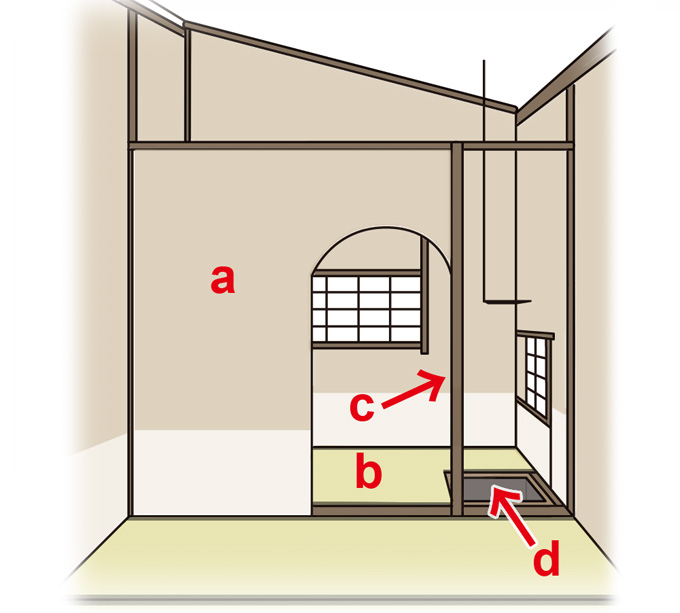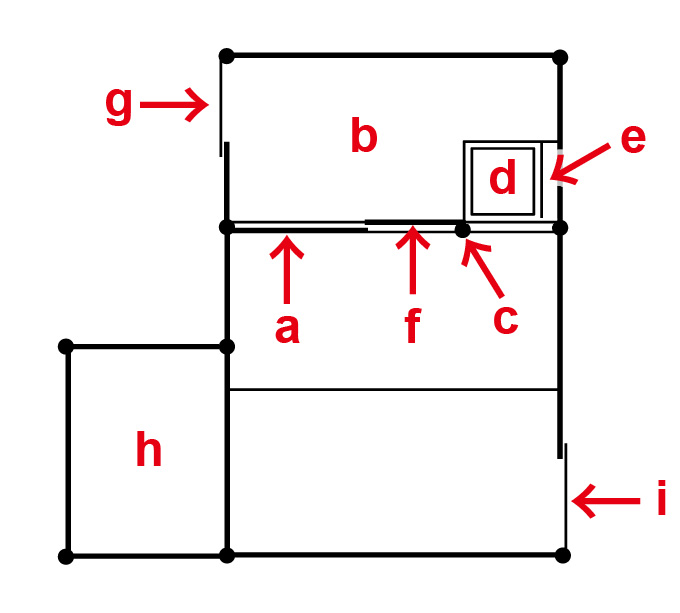| Also
called soutei zashiki 宗貞座敷. A 3-mat tea ceremony room *chashitsu 茶室 with a small
alcove *daimedoko
台目床 that was favored by Sasaya Soutei 笹屋宗貞 (17c). Sasaya Soutei's tastes
were influenced by his teacher, Fujimura Youken 藤村庸軒, who is said to have
created the Yodomi-no-seki 澱看席 (1685-86) at Kinkaikoumyouji Saiouin 金戒光明寺西翁院
(1584)in Kyoto. Originally, there was no alcove. In general, the souteigakoi
style resembles the *douangakoi 道安囲 but there are some differences. The
middle post *nakabashira
中柱 in the souteigakoi terminates the enclosure wall kakoikabe
囲壁, but does not extend above the wall as it does in the douangakoi style. Therefore, the lintel running along the top of the wall continues
across the entire room, and the room is completely open above it. Another
difference is that although one corner of the firebox *ro
炉 is located at the base of the middle post, it is in the *mukougiri
向切 style, that is set within the host's mat *temaedatami
点前畳. The host's entrance *katteguchi
勝手口 has small posts on either side and there is no special service entrance.
|




